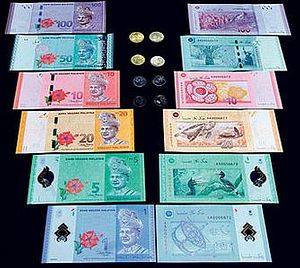The Malaysian economy seemed to be in a state of suspension in 2019. While observers expected a burst of economic activity in line with the promises made during Pakatan Harapan’s ascent to power in 2018, the year delivered little terms of economic growth.
In fact, the third quarter of 2019 offered a disappointing 4.4 percent GDP growth. The year as a whole is expected to chalk up no more than 4.6 percent growth for Malaysia. By comparison the ADB forecasts that other ASEAN countries will do better — Indonesia with 5.1 percent, and 6 percent and 6.9 percent for the Philippines and Vietnam respectively. These countries are of course at a lower stage of economic development, but the comparison is a reminder that Malaysia is not the sole attractor of trade and investment in Southeast Asia.
The Malaysian stock market is performing poorly, as is the Malaysian ringgit when compared to early 2018 when the U.S. dollar traded for around RM3.86. But that may not be the fairest of comparisons since the anxieties surrounding the U.S.–China trade war were not at their height then. Early in 2019, the ringgit was stronger against the U.S. dollar, marking around RM4.05 to the dollar. From August to October, a U.S. dollar traded for slightly above RM4.17, touching RM4.11 in December. Tensions due to the trade war seem to have impacted the ringgit.
Still, trade did very well. Malaysia’s trade surplus from January to September increased by 15.3 percent and amounted to RM100.9 billion ($24.7 billion). During the same period in 2018, the trade surplus was only RM87 billion ($21 billion). The trade surplus for October was just as strong, surpassing that of the previous year.
The U.S.–China trade war occupied considerable space in local debates. Commentators generally felt that the trade war would benefit Malaysia if prolonged, though not as much as Vietnam since Malaysia cannot compete based on cost structure. The restructuring of global value chains and the relocation of investment was also expected to work in Malaysia’s favor.
This was seemingly backed by empirical evidence, not least the fact that FDI approvals across all sectors rose to RM49.5 billion ($12.1 billion) in the first half of 2019, representing a 97.2 percent increase from RM25.1 billion ($6.1 billion) in the same period last year. The manufacturing sector was a significant beneficiary — FDI rose by 74.2 per cent to RM33.1 billion ($8 billion) in that sector (compared to RM19.0 billion or $4.6 billion in 2018).
The United States was the biggest source of approved manufacturing FDI (RM11.7 billion or $2.9 billion), followed by China (RM4.8 billion or $1.2 billion), Singapore (RM3.1 billion or $800,000) and Japan (RM2.1 billion or $500,000).
While there are several bright spots on the horizon, all is not well with confidence in the Malaysian economy. The Vistage–MIER CEO Confidence Index for the last quarter of 2019 closed at 85.3, falling to a four-year low. Almost half the respondents felt the economy had worsened in recent months. The CEO Confidence Index represents a slice of the business environment, largely capturing the sentiment of CEOs of small- and medium-sized businesses, who make up 80 percent of its members.
The index for current economic conditions stands at 63 points — indicating CEOs’ lack of confidence in the prevailing economic circumstances. There is no doubt that the previous government — under former Prime Minister Najib Razak — created several serious problems, high debt being the primary issue. Blame should be given where due, but to wallow in blame does not boost confidence — nor does it address the sense that there is a lack of forward guidance from the current government.
Besides, there has been a cycle of industrialization projects since the 1990s, including the subsidized national car project and other heavy industrialization projects, many of which have not been successful commercially.
This has ignited demands for a sterner set of evaluative criteria that make it difficult to unquestioningly receive the Third National Car Project, the rollout of 5G technology, and IR4.0 — a government initiative aimed at helping businesses grapple with transformative technologies. While cynicism about the economy and state-backed economic projects is not the most positive reception, it carries a healthy skepticism that cannot be disregarded by policymakers.
There is further skepticism about projects such as IR4.0 and 5G because they are supposedly forward looking. It is not clear if the government understands the implications of the fourth industrial revolution and what it means for small and medium-sized enterprises. Many companies may have not fully realized the potentialities of the third industrial revolution, nor do they have the resources or willingness to invest in research and development.
The same is the case with 5G, where companies may not be fully utilizing existing 4G infrastructure and lack the requisite expertise to utilize 5G technology. Statements about using 5G for distance surgery in rural areas may be precocious at this stage due to uncertain levels of technical expertise among surgeons and facilities in these locations.
Old questions regarding the high cost of living, the affordability of housing, healthcare financing, the state of education, and the need for upskilling also remain unanswered. These questions, as well as broader concerns about the economy, will need answering if Malaysia is to improve its economic standing at home and in the region.
Dr Shankaran Nambiar is a Senior Research Fellow at the Malaysian Institute of Economic Research. He is author of the recently published book, Malaysia: At the Edge of Transformation. This article was originally published over at East Asia Forum here.

































